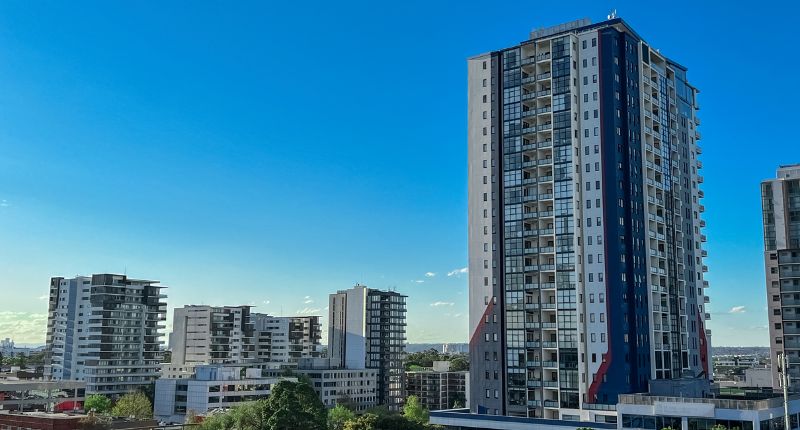- High density took a tumble, following a short-lived uptick in May.
- The results were mixed across the states, with NSW and Tasmania seeing large falls.
- Industry bodies continue to express concern over the low number of approvals.
Building approvals in Australia have fallen in June 2023, following a 20.5% rise in May, according to the Australian Bureau of Statistics (ABS). The total number of approvals dipped 7.7%, driven by private dwellings excluding houses, which fell 21%.
“Approvals for private sector houses decreased 1.3%, following a 0.8% rise in May,” said ABS head of construction statistics, Daniel Rossi.
“The average approval value for new houses has continued to increase year-on-year since April 2021. In June 2022 the average approval value for a new house was $409,900. Over the past 12 months this has risen by 12.5% to an average of $461,200 in June 2023.”
Dwelling units approved, by building type, seasonally adjusted

New South Wales (NSW) and Tasmania recorded large slumps in building approvals. While NSW recorded a 54% rise in building approvals in May, June saw a 44.9% fall. Tasmania similarly had strong May gains at 40.3%, while June saw 35.6% in falls. The remaining states recorded rises: South Australia was up 0.8%, Western Australia was up 8.7%, Victoria was up 26.4%, and Queensland was up 28.3%.
The outlook is ‘bleak’
The Urban Development Institute of Australia (UDIA) National today released a statement noting the latest building approvals figures “signal a bleak 18 months and more housing pain ahead.”
“Interest rates and rising costs have had an overwhelming impact on these dismal housing figures and the announcement today by the Reserve Bank to keep the finger on the pause button as interest rates bite hard into Australians’ finances, is a sensible decision, particularly as owner-occupier lending is down 20%, and investor lending is down 15% since last June,” said UDIA National President, Max Shifman.
The UDIA observed that today’s building approval figures show the largest quarterly drop in over a decade, down 18% for all dwellings and the price of housing builds increased by 12.5% in the last year.
“This data is the canary in the coal mine for Australian housing. We continue going backwards each year, with a shortfall of at least 21,000 market houses and 45,000 affordable/social houses expected this year. The industry will deliver 20% less housing than we did last year,” said Shifman.
Renters to shoulder the burden
Master Builders Australia (MBA) has welcomed the hold on interest rates, but said the building approval data is “more bad news for Australia’s housing crisis.”
“The rental market is feeling the brunt of this pressure with higher-density home building approvals sinking by 21.0% in June,” said MBA CEO, Denita Wawn.
“New apartment and unit building is a key source of new supply for Australia’s rental market. These results come on top of last week’s figures showing that rental inflation has shot to its highest rate in 14 years.”
“Sadly, the uptick in higher density approvals in May was short-lived with approvals returning to low levels since before the pandemic.
“Right now, many new home building projects are failing to get off the ground due to the combination of high costs and a declining investment appetite, inflamed by rising interest rates.”








